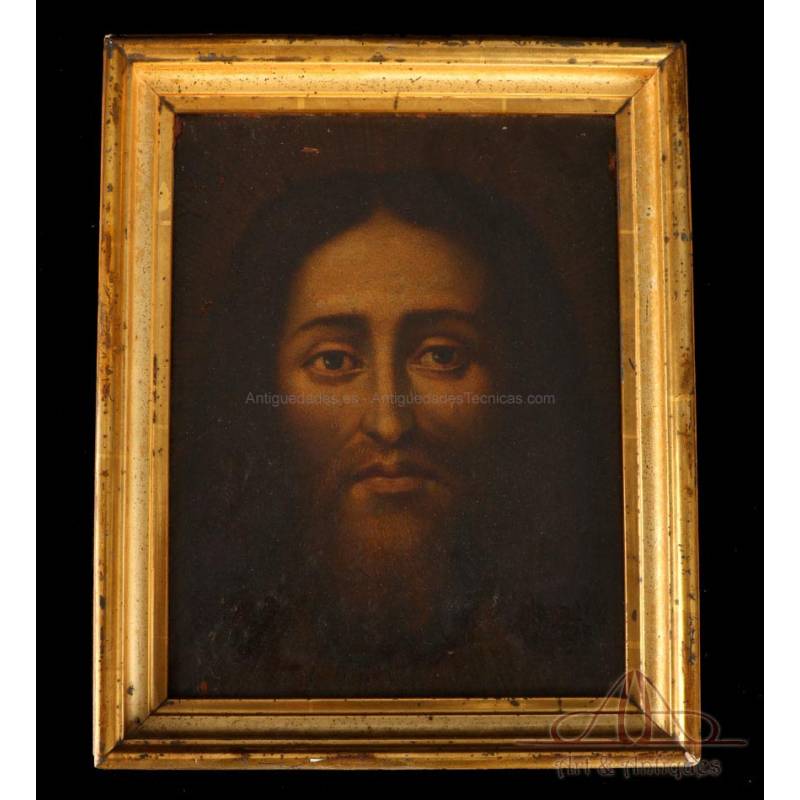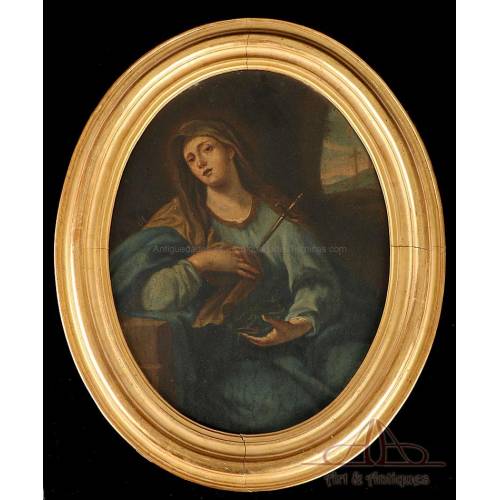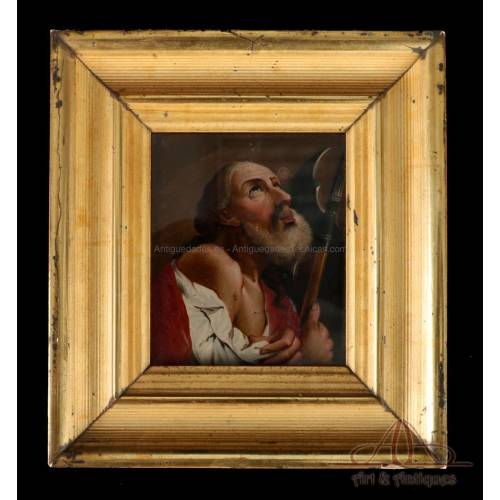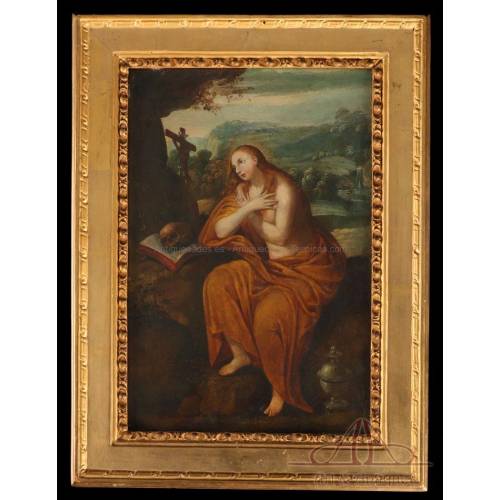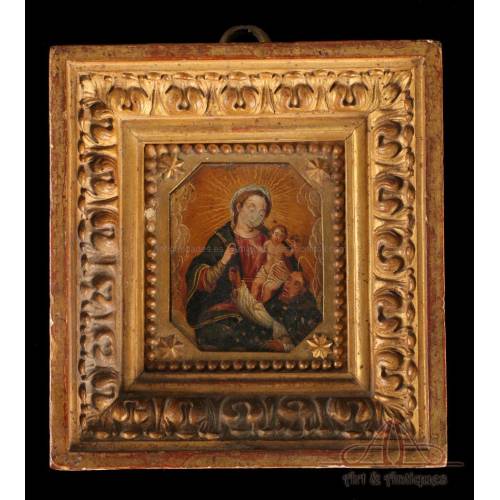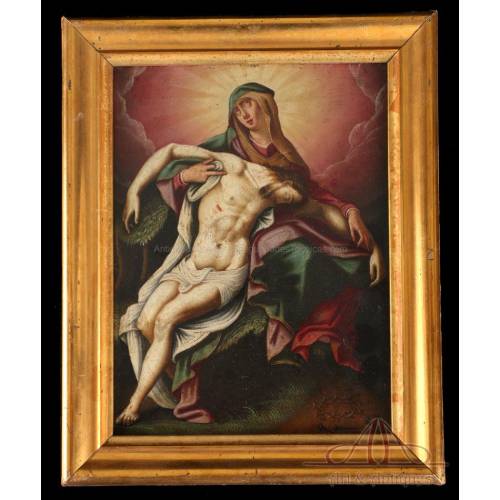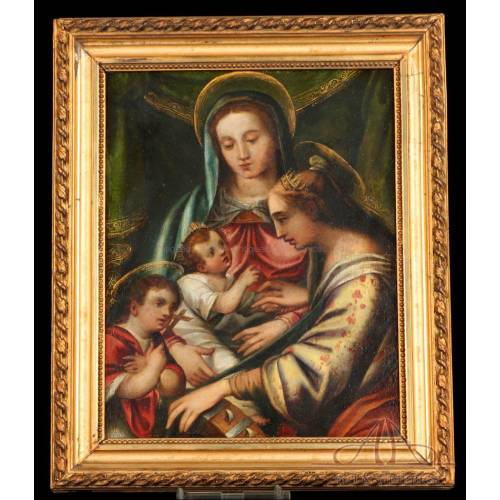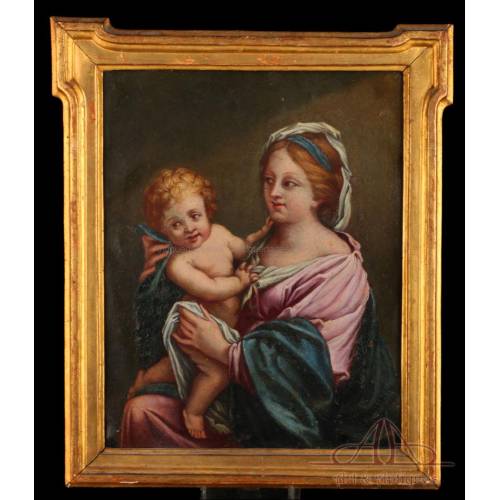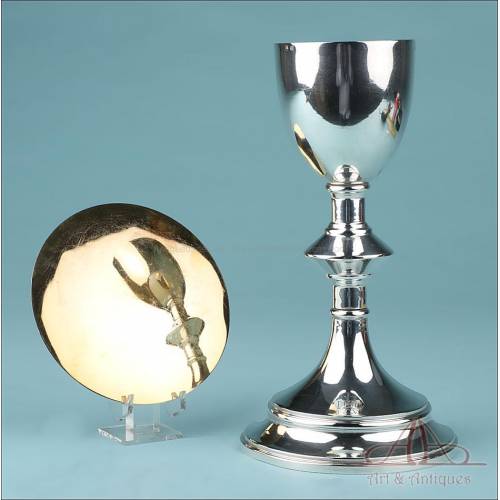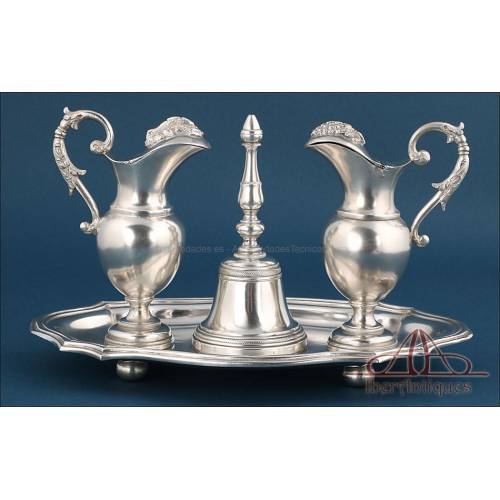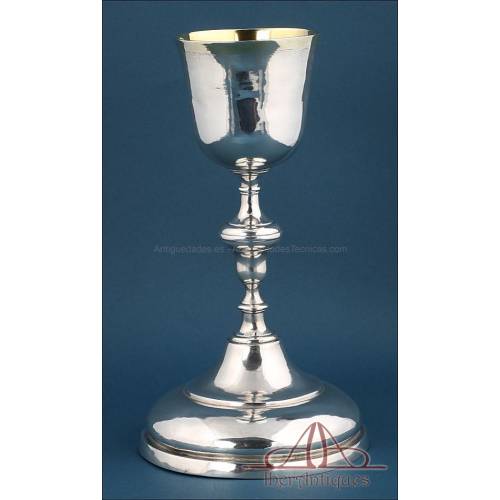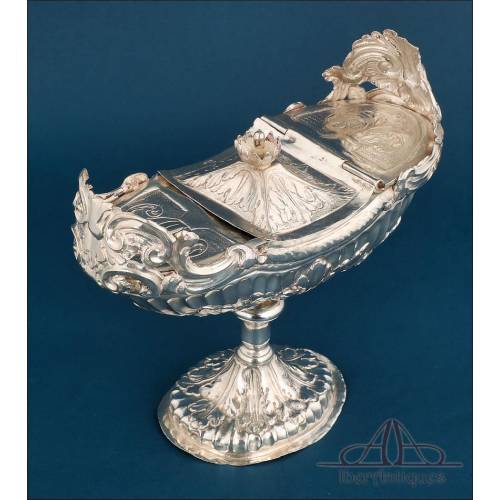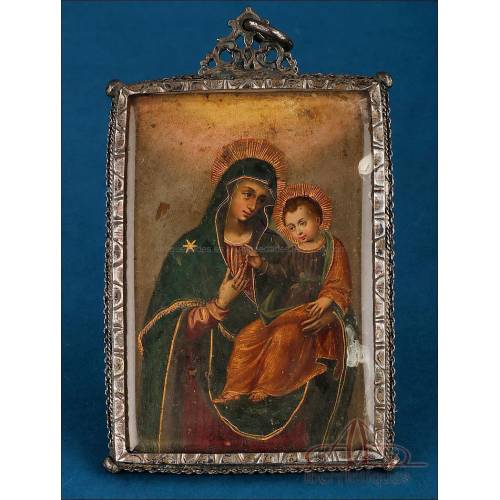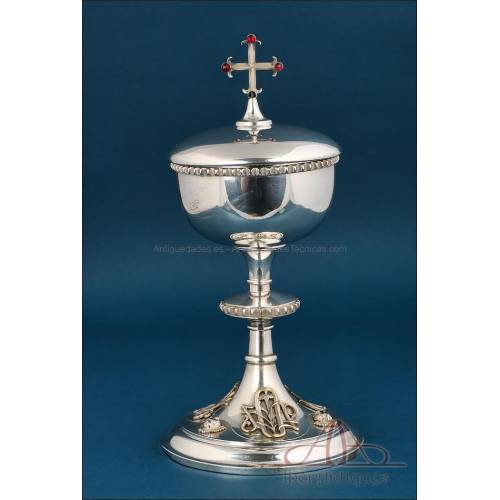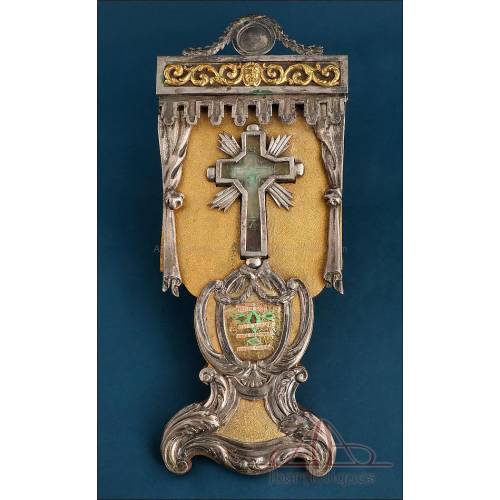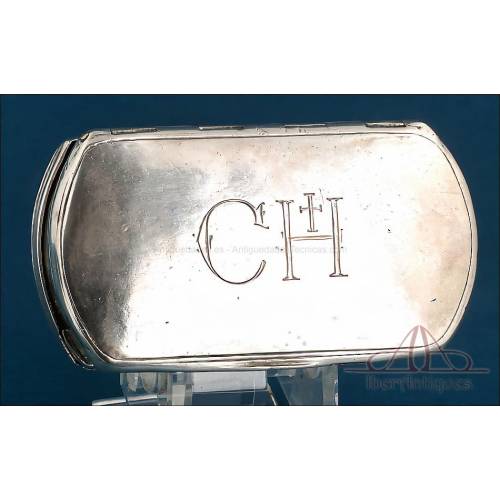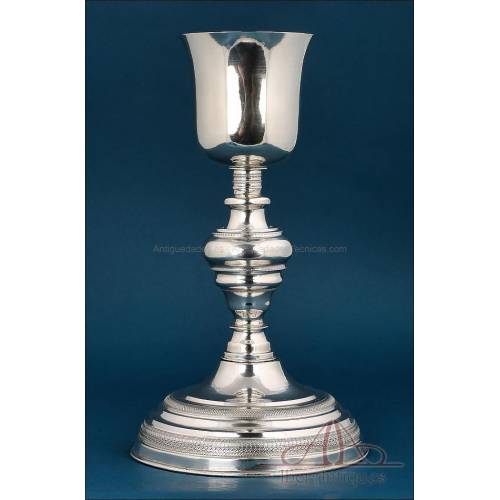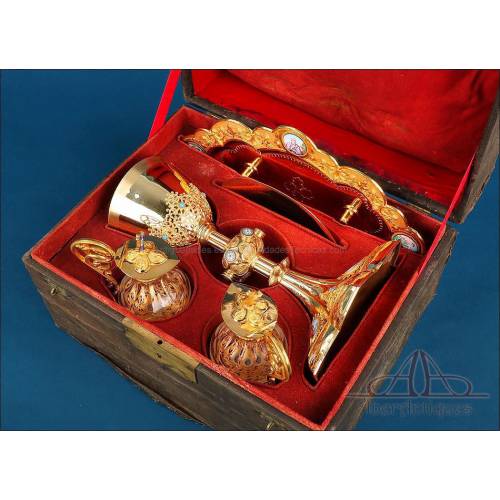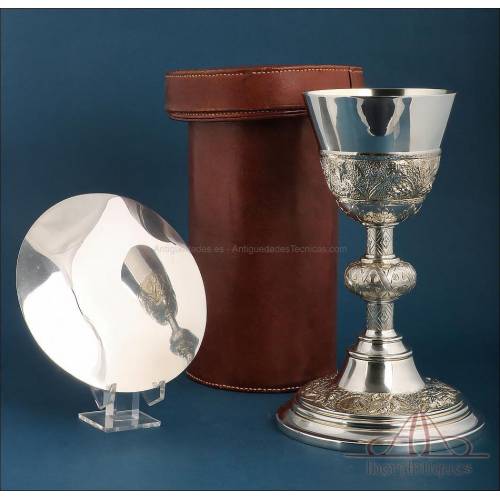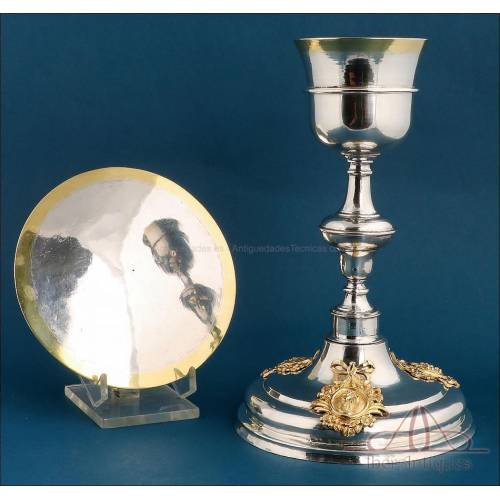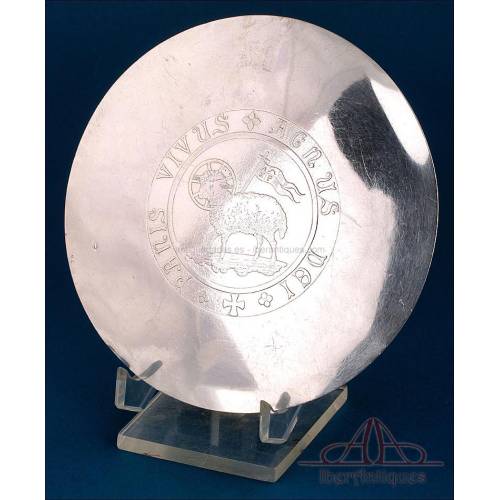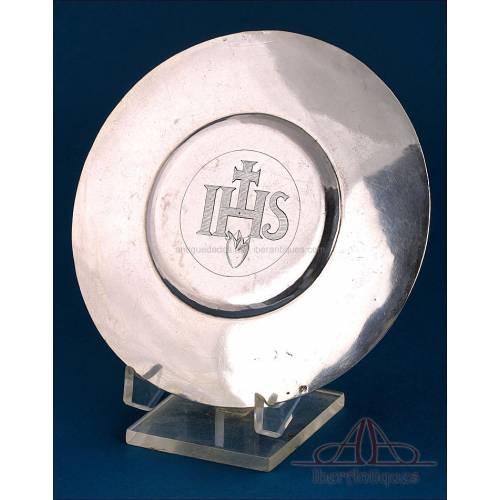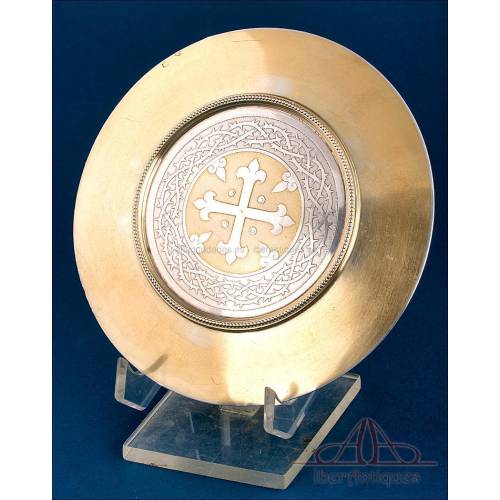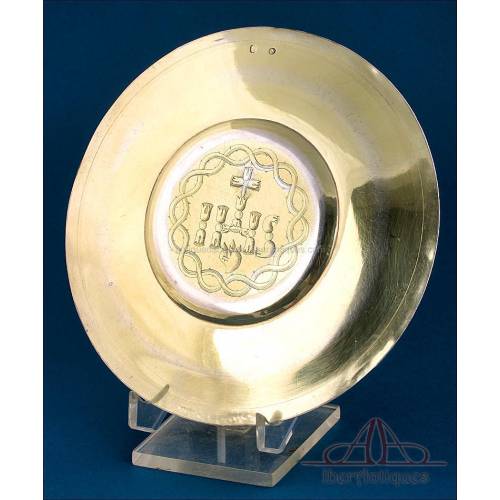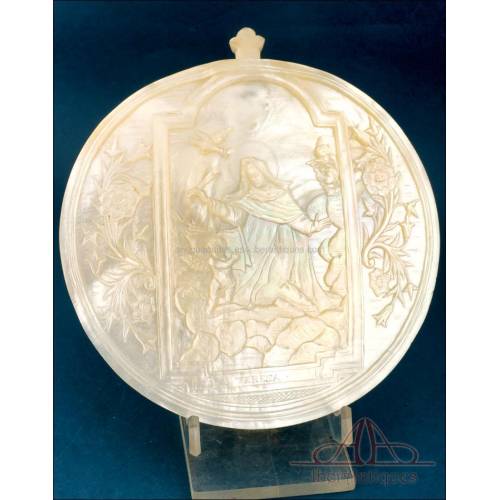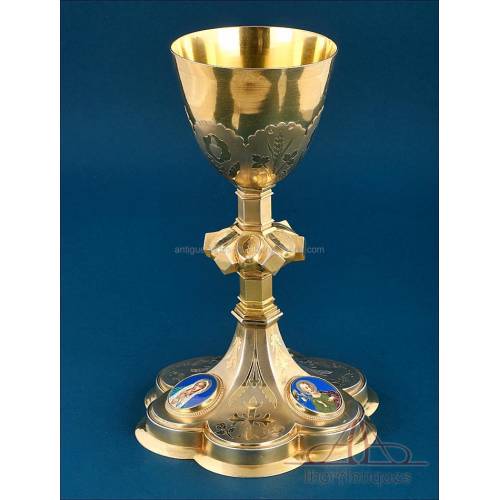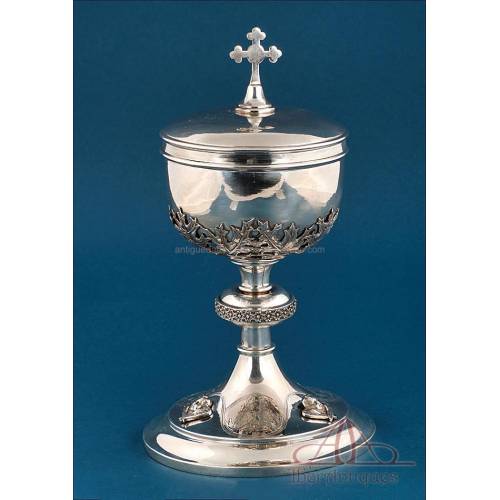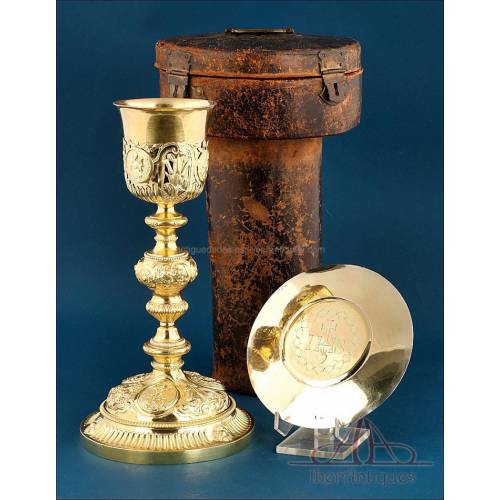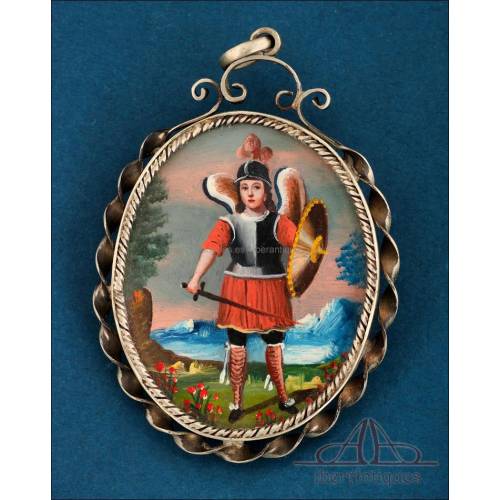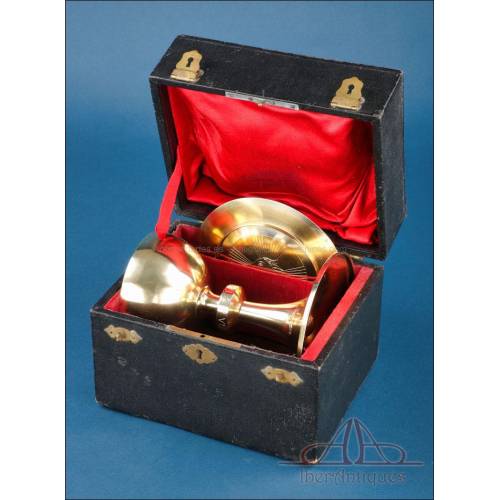D-783
Ecce Homo. Jesus of Nazareth. Oil on Board. Italian School, 18th Century
Great baroque Ecce Homo painted in oil on board, deeply expressive. Original from the Italian School.
Antique Ecce Homo in Oil on Panel, Italian School, 18th Century
With a serene strength that invites contemplation, this original eighteenth-century painting represents the theme of the Ecce Homo, one of the most moving subjects in Christian art. Executed in oil on panel and belonging to the Italian School, this work reflects the artistic sensitivity of its time, focused on conveying spiritual depth through restrained expression.
Christ is depicted from the front, with a serene face marked by tears flowing from his eyes and running down his cheeks. His gaze, filled with sadness and resignation, forms the expressive center of the entire composition. His mouth, closed and natural, reinforces the feeling of introspection. The painter has dispensed with the more dramatic elements of the Passion to focus on the intensity of the gaze, a characteristic resource of eighteenth-century Italian devotional painting.
The dark background creates a direct contrast with the face of Jesus, which emerges clearly. The light models his features delicately, using a palette of warm and earthy tones. This treatment recalls the technical solutions of the Renaissance, where chiaroscuro creates volume without resorting to artifice. The work achieves a contained atmosphere that awakens an intimate connection with the viewer.
The theme of the Ecce Homo, "Behold the Man," originates from the passage in the Gospel according to Saint John, chapter 19, verse 5, when Pontius Pilate presents Jesus to the people after he has been scourged and crowned with thorns. This representation has been a constant in Christian art since the Middle Ages and developed widely during the Renaissance and the Baroque. In the eighteenth century, especially in Italy, it took on a more sober and introspective form, focusing on facial expression as the main channel of spiritual communication.
Italian artists of this period sought to capture the dignity of Christ’s suffering through representations in which emotion is not expressed with exaggerated gestures but through the gaze, the tears, and the serenity of the features. The bust format, isolated against a dark background, allowed for a more direct and personal meditation. Many of these paintings were commissioned for private devotion, in oratories or chapels, and were executed on panel to ensure their durability.
The painting is preserved on its original wooden panel and is presented in a water-gilded wooden frame, also from the period. The gilding, softly worn by the passage of time, shows a warm patina that enhances the ensemble. The visible signs of age on the frame are consistent with its age and do not affect its integrity, on the contrary, they add authenticity.
The water-gilded frame, like the one preserved with this work, is typical of its time. It adds not only decorative but also historical value. The combination of refined technique, original support, and antique frame makes these pieces authentic testimonies to eighteenth-century European spirituality. This image, centered on emotional intimacy rather than narration, faithfully represents that tradition and remains a work of special interest both for faith and for art history.
This Ecce Homo is not only a piece for contemplation, it is a dignified and moving representation of Christ’s suffering and humanity. Due to its style, technique, and origin, it would be perfect to reintroduce into the Church, for use in a parish. It is also a valuable work for any sacred art collection, bringing presence, introspection, and character.
A significant acquisition both for its devotional and artistic value, which will stand out in any setting for its sobriety and visual power.
Dimensions: 25.5 x 19.5 cm (10 x 7.68 in).
Framed: 31 x 25 cm (12.2 x 9.84 in).

